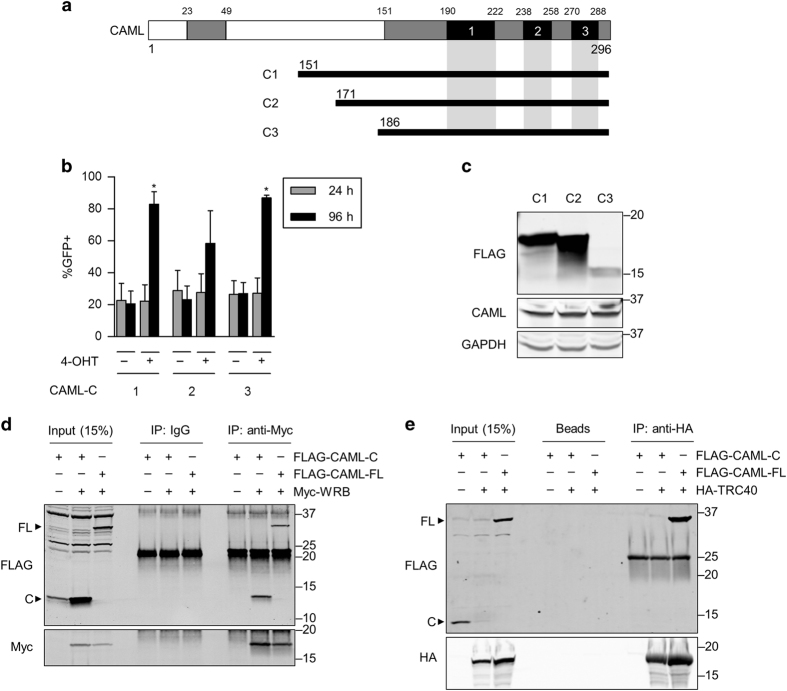Figure 6.
CAML C terminus is sufficient to rescue Caml-deleted cells, and binds to WRB but not TRC40. (a) Schematic representation of CAML C-terminal fragments. Truncation mutants were subcloned into MigR1 vector with an N-terminal FLAG tag. Expressed amino acids are indicated. Gray=conserved regions, Black=transmembrane domains (TMD1–3). (b) CAML-C1–C3 rescue Caml-deleted lymphoma cells. Eμ-Myc;Cre-ER;Camlfl/fl (E2409) cell line was transduced with the CAML-C fragments, treated with vehicle (−, ethanol) or 4-OHT (+), and measured for GFP expression at 24 and 96 h after treatment. Values are mean±S.E.M. of two independent replicates from representative data that gave similar results. (c) Western blot for CAML-C fragments. HEK293T cells were transfected with CAML-C vectors and collected for lysate. (d) CAML-C binds to WRB. HEK293T cells were transfected with combinations of CAML-C3 (FLAG-CAML-C), full-length CAML (FLAG-CAML-FL), and Myc-WRB, collected for lysate, immunoprecipitated with anti-Myc antibodies, and analyzed by western blot. (e) CAML-C does not bind to TRC40. Same method as in d was performed except HA-TRC40 was transfected instead of Myc-WRB, and immunoprecipitation was performed using anti-HA-affinity matrix. Statistical differences between 24 and 96 h time points for 4-OHT-treated cells are denoted by *P<0.05. Lack of significance is not indicated.

